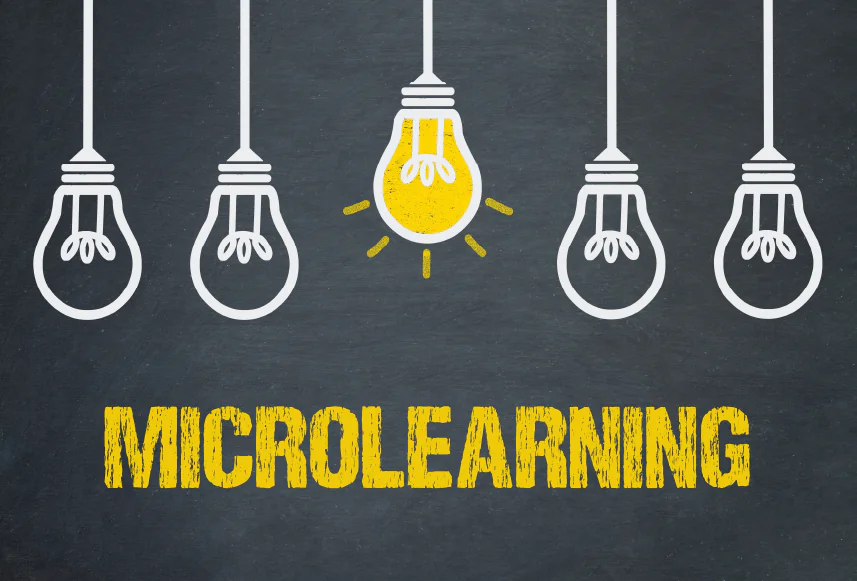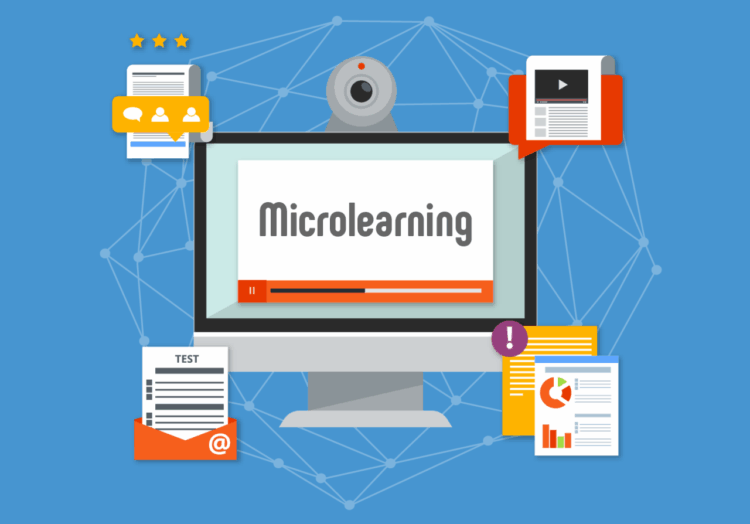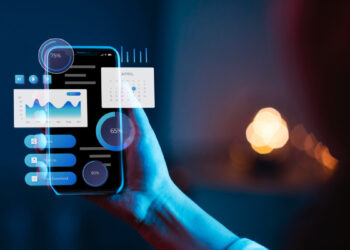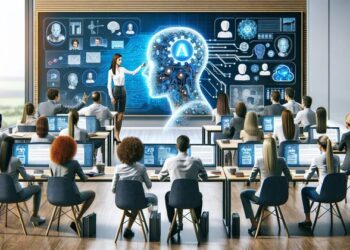In today’s fast-paced world, traditional long-form learning methods often struggle to keep up with the demand for immediate knowledge and practical skills. Professionals and students alike are bombarded with information, and the luxury of dedicating extensive periods to formal education is increasingly rare. This paradigm shift has propelled microlearning to the forefront of educational innovation. Microlearning is an approach to learning that delivers content in small, focused bursts, designed for rapid consumption and targeted skill acquisition. It’s not merely about shortening existing content; it’s a deliberate pedagogical strategy that maximizes engagement, retention, and applicability, making it an indispensable tool for continuous learning and professional development.
The Essence of Microlearning

At its heart, microlearning is about breaking down complex information into digestible, self-contained units that can be consumed quickly and efficiently. Each unit typically focuses on a single learning objective, delivering just-in-time knowledge when and where it’s most needed. This approach leverages our natural cognitive processes, which are better at absorbing and retaining information in smaller chunks, rather than overwhelming them with vast amounts of data.
A. Defining Microlearning Characteristics:
While there’s no universally agreed-upon exact time limit, microlearning content generally adheres to several key characteristics that distinguish it from traditional e-learning modules.
- Brevity: Microlearning units are short, typically lasting anywhere from 1 to 10 minutes, rarely exceeding 15 minutes. This brevity is crucial for fitting into busy schedules and accommodating limited attention spans.
- Focus: Each microlearning unit addresses a single, specific learning objective or a narrowly defined concept. This singular focus prevents cognitive overload and ensures clarity.
- Variety of Formats: Microlearning content can take many forms, including short videos, infographics, interactive quizzes, concise text snippets, mini-games, flashcards, or even brief audio clips. The choice of format depends on the content and the learner’s preference.
- Accessibility: Microlearning content is typically designed to be easily accessible on various devices, especially mobile phones, allowing learners to engage anytime, anywhere.
- Just-in-Time Delivery: It’s often deployed when learners need a specific piece of information or skill immediately, supporting performance at the point of need.
- Self-Contained: Each unit is designed to be complete and understandable on its own, without requiring extensive prior knowledge or subsequent modules to make sense.
- Actionable: The content is usually highly practical and directly applicable, designed to help learners perform a specific task or solve a particular problem.
B. Psychological and Pedagogical Foundations:
The effectiveness of microlearning isn’t accidental; it’s grounded in robust psychological principles and learning theories.
- Cognitive Load Theory: This theory suggests that our working memory has a limited capacity. Microlearning reduces cognitive load by presenting information in small, manageable chunks, allowing learners to process and integrate it more effectively into long-term memory.
- Spaced Repetition: Microlearning is perfectly suited for spaced repetition, a technique where information is reviewed at increasing intervals. Short bursts of content make it easy to revisit concepts regularly, strengthening memory retention over time.
- Attention Spans and Engagement: In the digital age, attention spans are often fragmented. Microlearning accommodates this reality by delivering information quickly and directly, maintaining engagement by avoiding lengthy, potentially disengaging content.
- Adult Learning Principles (Andragogy): Adult learners are often self-directed, pragmatic, and motivated by relevance. Microlearning aligns with these principles by offering relevant, practical content that can be immediately applied to real-world situations, empowering learners with autonomy.
- The Forgetting Curve: Ebbinghaus’s Forgetting Curve demonstrates how quickly we forget new information if it’s not reinforced. Microlearning provides an effective mechanism for frequent, targeted reinforcement, actively combating this natural decline in memory.
Multifaceted Benefits Across Learning Ecosystems
Microlearning’s impact extends across various sectors, from corporate training and professional development to academic reinforcement and personal upskilling. Its adaptability makes it a powerful solution for numerous educational challenges.
A. Elevating Corporate Training and Employee Development:
In the corporate world, continuous upskilling and reskilling are critical for maintaining a competitive edge. Microlearning offers an agile and efficient solution.
- Improved Compliance Training: Delivering compliance modules in short, digestible segments makes often dry material more engaging and memorable, increasing adherence rates.
- Faster Onboarding: New hires can quickly grasp essential information and company procedures through bite-sized modules, accelerating their integration into the workforce.
- Just-in-Time Performance Support: Employees can access quick tutorials or refreshers on specific tasks (e.g., how to use a new software feature) exactly when they need them, boosting productivity and reducing errors.
- Upskilling and Reskilling Agility: Companies can rapidly deploy new training content in response to evolving market demands or technological advancements, ensuring their workforce’s skills remain current.
- Higher Completion Rates: Compared to lengthy e-learning courses, microlearning modules typically see significantly higher completion rates due to their low time commitment and immediate gratification.
B. Enhancing Academic Learning and Reinforcement:
While not replacing traditional curricula, microlearning can powerfully supplement academic education at all levels.
- Concept Reinforcement: Students can use microlearning videos or quizzes to reinforce complex concepts learned in class, solidifying their understanding.
- Exam Preparation: Short, focused modules on specific topics are ideal for quick review sessions before tests, helping students recall key information efficiently.
- Flipped Classroom Models: Microlearning content can serve as the “pre-work” for flipped classrooms, allowing students to grasp foundational concepts before engaging in deeper discussions or problem-solving in class.
- Bridging Learning Gaps: For students struggling with specific areas, microlearning modules can provide targeted remediation without overwhelming them with an entire textbook chapter.
- Personalized Learning Paths: Educators can curate personalized microlearning playlists for individual students based on their strengths and weaknesses, offering a tailored learning experience.
C. Empowering Personal Development and Lifelong Learning:
For individuals seeking to continuously learn and grow, microlearning offers unparalleled flexibility and convenience.
- Hobby and Skill Acquisition: Learning a new language, mastering a specific cooking technique, or understanding a complex financial concept can be broken down into manageable microlearning steps.
- Professional Certification Prep: Individuals can use microlearning to prepare for professional certifications by focusing on specific domains or challenging topics in short bursts.
- Staying Current with Trends: In fast-evolving fields, microlearning allows professionals to quickly absorb updates and new information without dedicating significant time to formal courses.
- Increased Accessibility: The mobile-first nature of many microlearning platforms makes learning accessible during commutes, short breaks, or any spare moment.
Designing and Implementing Effective Microlearning
Creating impactful microlearning content requires more than just making existing material shorter. It demands a thoughtful design process that prioritizes clarity, engagement, and direct applicability.
A. Strategic Content Design Principles:
The success of microlearning hinges on how well the content is conceived and structured.
- Single Learning Objective Per Module: This is paramount. Each microlearning unit should aim to teach one distinct concept or skill. If there are multiple, break them down further.
- Audience-Centric Approach: Understand your learners. What are their existing knowledge levels? What specific problems are they trying to solve? Tailor the content and format to their needs and preferences.
- Storyboarding and Scripting: Even for short videos or interactive modules, a clear storyboard and script are essential to ensure a logical flow, concise messaging, and engaging delivery.
- Visual Appeal and Engagement: Leverage strong visuals (infographics, animations, high-quality video), clear typography, and intuitive interfaces. Visuals are processed much faster than text and enhance retention.
- Active Learning Elements: Incorporate interactive elements like short quizzes, drag-and-drop activities, simulations, or reflective prompts to encourage active participation rather than passive consumption.
- Clear Call to Action/Application: At the end of each module, clearly state what the learner should be able to do or understand, and ideally, suggest how they can immediately apply the learned skill.
- Modular and Navigable: Ensure that individual microlearning units can be easily searched, accessed, and navigated within a larger learning ecosystem, allowing learners to find specific information quickly.
B. Choosing the Right Format for the Message:
The effectiveness of microlearning is often tied to selecting the most appropriate format for the content and learning objective.
- Short Videos (1-5 minutes): Ideal for demonstrating procedures, explaining complex concepts visually, or providing quick overviews. Think “how-to” guides or animated explainers.
- Infographics: Excellent for presenting data, processes, or hierarchical information in a visually engaging and digestible manner.
- Interactive Quizzes/Flashcards: Perfect for knowledge checks, vocabulary building, or rapid recall practice.
- Audio Snippets/Podcasts (2-7 minutes): Suitable for conveying conceptual information, interviews, or quick tips for auditory learners, especially during commutes.
- Text Snippets/Checklists: Highly effective for conveying instructions, procedures, key definitions, or quick reference guides.
- Mini-Simulations/Branching Scenarios: Best for practicing decision-making, soft skills, or troubleshooting in a safe, controlled environment.
- Games/Gamified Elements: Can be integrated into any format to boost engagement, motivate completion, and provide a fun learning experience.
C. Leveraging Technology for Delivery:
Modern learning platforms and tools are crucial for the efficient delivery and management of microlearning content.
- Learning Management Systems (LMS): Most modern LMS platforms support the integration and tracking of microlearning modules, allowing for content organization and learner progress monitoring.
- Learning Experience Platforms (LXP): LXPs are designed to offer a more personalized and curated learning journey, often leveraging AI to recommend microlearning content based on a learner’s needs and preferences.
- Mobile Learning Apps: Dedicated mobile apps are ideal for delivering microlearning, leveraging push notifications and offline access to maximize convenience.
- Authoring Tools: Software like Articulate Storyline, Adobe Captivate, or even simpler tools like Canva and Loom, enable the creation of various microlearning formats.
- Content Repositories/Libraries: A well-organized repository allows learners to easily search for and access relevant microlearning units on demand.
Overcoming Challenges and Maximizing Impact

While microlearning offers significant advantages, its successful implementation requires addressing certain challenges and strategic considerations to ensure its long-term effectiveness.
A. Avoiding Fragmentation of Knowledge:
A common concern is that breaking content into small pieces might lead to a fragmented understanding rather than a holistic view.
- Provide Context and Navigation: Always ensure learners understand how individual microlearning units fit into a larger topic or curriculum. Offer clear navigation pathways between related modules.
- Curated Learning Paths: Organize microlearning units into logical sequences or “learning paths” that guide learners through a topic from foundational concepts to advanced skills.
- Summaries and Overviews: Include brief introductory and concluding summaries for larger topics to provide context and reinforce key takeaways.
- “Macro” Context for “Micro” Content: While individual units are micro, the overall learning strategy should have a “macro” view, ensuring coherence and progression.
B. Ensuring Quality and Relevance:
The ease of creating short content can sometimes lead to a proliferation of low-quality or irrelevant material.
- Content Curation and Vetting: Implement a robust process for curating and vetting microlearning content to ensure accuracy, pedagogical soundness, and high quality.
- Regular Updates: Knowledge evolves rapidly. Microlearning content should be regularly reviewed and updated to maintain its relevance and accuracy.
- Alignment with Learning Outcomes: Every microlearning unit must directly contribute to a defined learning outcome. Avoid creating content simply because it’s short.
C. Measuring Effectiveness and ROI:
Demonstrating the return on investment for microlearning initiatives is crucial for sustained adoption.
- Completion Rates: Track how many learners complete microlearning modules.
- Knowledge Retention: Use post-module quizzes and periodic assessments to measure knowledge retention over time.
- Performance Improvement: Link microlearning completion to tangible improvements in job performance, efficiency, or error reduction.
- Learner Feedback: Gather feedback on the perceived value, engagement, and applicability of the microlearning content.
- Time-to-Competency: Measure how quickly learners acquire new skills or achieve competency after engaging with microlearning.
D. Shifting Learner Mindsets and Habits:
Encouraging learners to embrace microlearning requires a shift in their learning habits.
- Promote the Benefits: Clearly communicate to learners how microlearning can fit into their busy lives and directly benefit their personal and professional growth.
- Integrate into Daily Routines: Encourage learners to incorporate microlearning into short breaks, commutes, or during moments of downtime.
- Support and Guidance: Provide guidance on how to best utilize microlearning resources, demonstrating how they can be used for just-in-time support or continuous learning.
The Future of Microlearning in an AI-Driven World
The trajectory of microlearning is profoundly intertwined with advancements in Artificial Intelligence (AI). This synergy promises to unlock unprecedented levels of personalization, efficiency, and effectiveness in education and training.
A. Hyper-Personalized Learning Pathways:
AI’s ability to analyze vast amounts of data will transform how microlearning content is delivered and tailored.
- Adaptive Content Delivery: AI will dynamically recommend specific microlearning units based on a learner’s performance data, learning style, knowledge gaps, and even emotional state (if advanced sentiment analysis is used). This ensures learners always receive the most relevant content at the optimal time.
- Personalized Skill Gap Identification: AI algorithms can pinpoint precise skill gaps for individuals based on their professional roles, career aspirations, and industry trends, then automatically curate microlearning pathways to address these specific needs.
- Contextual Recommendations: Imagine an AI system that knows you’re about to undertake a specific task and proactively suggests a 2-minute microlearning video on how to execute a tricky part of it.
B. AI-Generated Microlearning Content:
While still in its nascent stages, generative AI holds the potential to automate aspects of microlearning content creation.
- Automated Summarization: AI could summarize lengthy documents or videos into concise microlearning text snippets or key takeaways.
- AI-Powered Quiz Generation: Based on learning content, AI could automatically generate quizzes, flashcards, or interactive questions for rapid knowledge checks.
- Dynamic Scenario Creation: For simulations or branching scenarios, AI might generate variations of challenges based on a learner’s previous performance, ensuring continuous novelty and appropriate difficulty.
C. Enhanced Accessibility and Inclusivity:
AI can further democratize access to microlearning for a wider range of learners.
- Real-time Translation and Transcription: AI-powered tools can provide instant translations and transcriptions of microlearning videos or audio, breaking down language barriers.
- Accessibility Features: AI can enhance accessibility by automatically generating captions, providing audio descriptions for visuals, or adapting content presentation for learners with visual or hearing impairments.
D. Intelligent Reinforcement and Spaced Repetition:
AI’s analytical power makes it ideal for optimizing spaced repetition schedules within a microlearning framework.
- Predictive Forgetting Curve: AI can learn each individual’s unique forgetting curve and then intelligently schedule the optimal time for them to revisit specific microlearning units, maximizing long-term retention.
- Gamified Reinforcement: AI can integrate gamified elements into reinforcement activities, making the review process engaging and motivating.
Conclusion
Microlearning is more than just a passing trend; it represents a fundamental shift towards more agile, efficient, and learner-centric education. By focusing on concise, targeted content delivered with precision, it addresses the modern learner’s need for flexibility and immediate applicability. As technology, particularly AI, continues to advance, microlearning is poised to become the cornerstone of lifelong learning, empowering individuals and organizations to adapt, grow, and thrive in an ever-evolving world.












